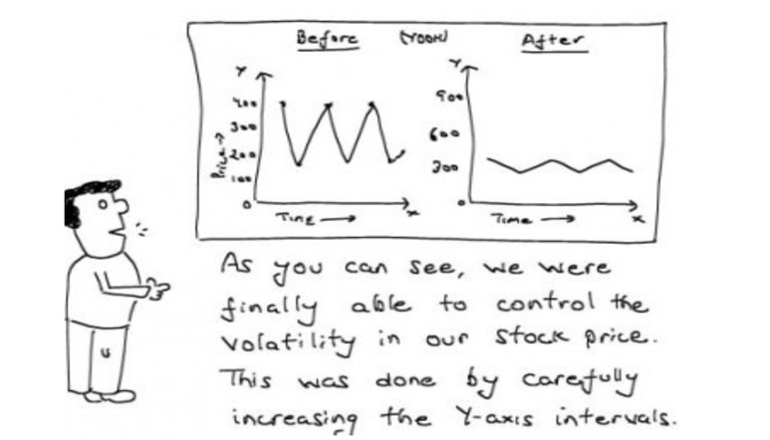Markets Bounce Up In January
Monthly Market and Economic Update – February 2023

Peter Flannery Financial Adviser CFP
“If you have one economist on your team,
it’s likely that you have one more than you’ll need.”
Warren Buffett
Key Points:
- 2022 was unusually volatile.
- What does that mean for your portfolio in 2023?
- Earnings reports are important.
- Big Tech reports revenue and earnings, how did that go?
- What is the outlook for inflation over 2023?
- When will interest rates stop rising?
THE MARKETS
Markets just bounced up

The above image (source: Visual Capitalist) provides a graphic representation of trading price rises or falls (green means up, red means down).
Looking at share market indexes we can see that the NASDAQ is up around 10.3% so far this year compared to the S&P 500 Index which is up by 6.2% and the Dow Jones Industrial average is up by 2.6%.
Why the rally?
Simply, there are some signs that inflation may have peaked and that the US Fed Governor, Jerome Powell is easing back on interest rate hikes. The market likes that.
By the time you read this report we’ll all know how the earnings season is progressing, specifically with the likes of Apple, Amazon, Alphabet and other tech companies.
I mention this because earnings are front and centre in terms of importance for near-term market direction.
A strongly negative surprise, particularly in more than one big tech company might spook the market seeing markets suddenly decline sharply.
On the other hand, near misses or expectations met could see the current buoyancy remain in place and the rally continue for a bit longer.
So, looking ahead but keeping it simple, the disinflationary process could well be underway in the near term, but might be driven by those interest rate hikes of the past, manifesting across the economy. This might include unemployment rising along with other indicators that contribute to slowing economic growth in America.
The risk
The big risk is a repeat of the 1970s whereby the US Federal Reserve slowed down interest rate hikes and then inflation basically burst out of the starting box, becoming very difficult to control. It took years, many many years.
This is not to say that we’ll have a repeat necessarily of the 1970s, 1980s and 1990s. It is a contingent risk that I am keeping an eye on.
From an investing perspective, it doesn’t mean that you cannot make money either. It is however an environment that does impact on trading prices in a way that won’t suit every investor.
Currency

The above table provides a quick look at the exchange rate between the New Zealand dollar and a number of other currencies.
Over the latter part of 2022, with the US dollar strengthening against most currencies as interest rates in the US climbed, I slowed down the purchase of US dollar-based assets because they become expensive due to that shift in the currency cross rate.
Right now, the cross rate hovers around the 65-cent mark which is about right for us to recommence purchasing US-based dollar assets once again.
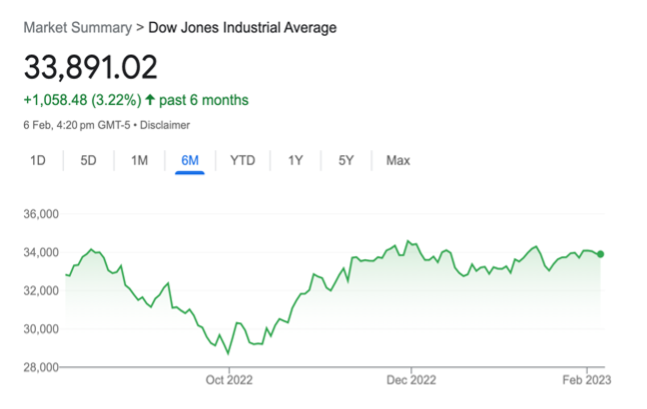
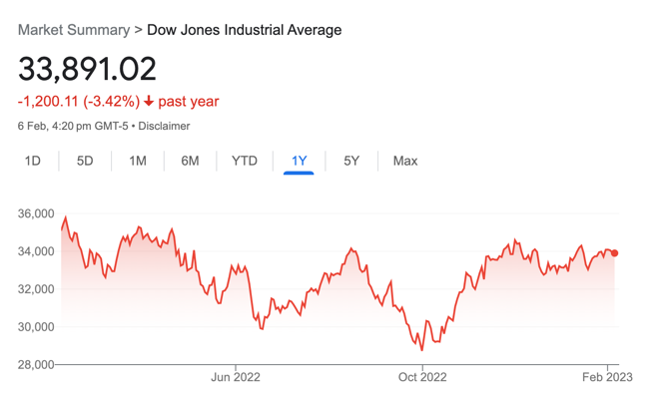
The chart on the left shows the US share market (the Dow Jones) over the last six months. The chart on the right shows the US share market (the Dow Jones) over the last year.
So, what we’re seeing across the markets after an unusually volatile period over 2022 is what could be the start of an upward trend, depending on how inflation moves from here.
That’s because the rate of inflation, including the personal consumption expenditures price index (PCE) in America will help the US Fed determine the pace of rate hikes over the remainder of 2023.
Near-term, quarterly earnings reports will determine when the markets rise or fall.
It’s worth bearing in mind with all this talk about markets, is that the more important component of our investment process is the quality of the business that we invest in.
We’ve just seen earnings reports from Apple, Amazon and Alphabet all of which provided mixed results, not entirely unexpected. Although longer term, big picture, these quarterly earnings reports are less important however, short-term they determine the trading price and whether it moves up or down. More specifically it’s the market’s reaction to the news that moves those trading prices.
Those quarterly earnings reports are somewhat mixed but not significant enough to overly concern the markets (yet).
What now becomes important is the rest of this quarter’s announcements and the next round of quarterly announcements in about 3 months from now. I will keep you posted.
The Global Economy
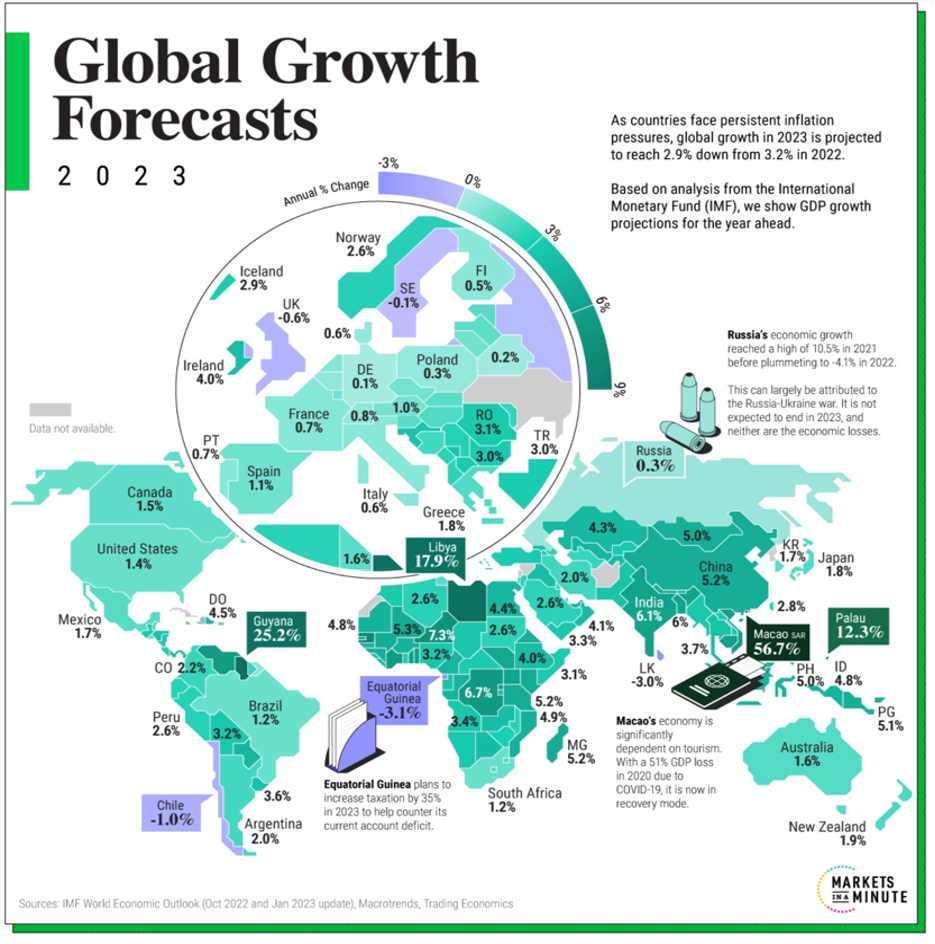
The above map shows economic growth projections around the globe for 2023.
The global economy is forecast to grow around 2.9% as measured by Growth Domestic Product (GDP) over 2023. This is down from a previous forecast of 3.2% for 2022.
So what does this mean? In simple terms, economic growth is slowing, which is not unexpected however all things equal, economic growth is on the horizon as distinct from deflation, a totally different environment.
The largest economies around the world contribute the most with the projected growth helped to some degree by China opening up since the recent relaxation of the rules around COVID lockdowns.
We are seeing a wave of big tech staffing layoffs and yet unemployment remains stubbornly low. Eighty-eight thousand technology jobs were cut last year, and these layoffs appear to be continuing into 2023.
Inflation remains an ongoing concern and therefore the path of interest rate hikes moving forward, although both appear to be moderating to some degree.
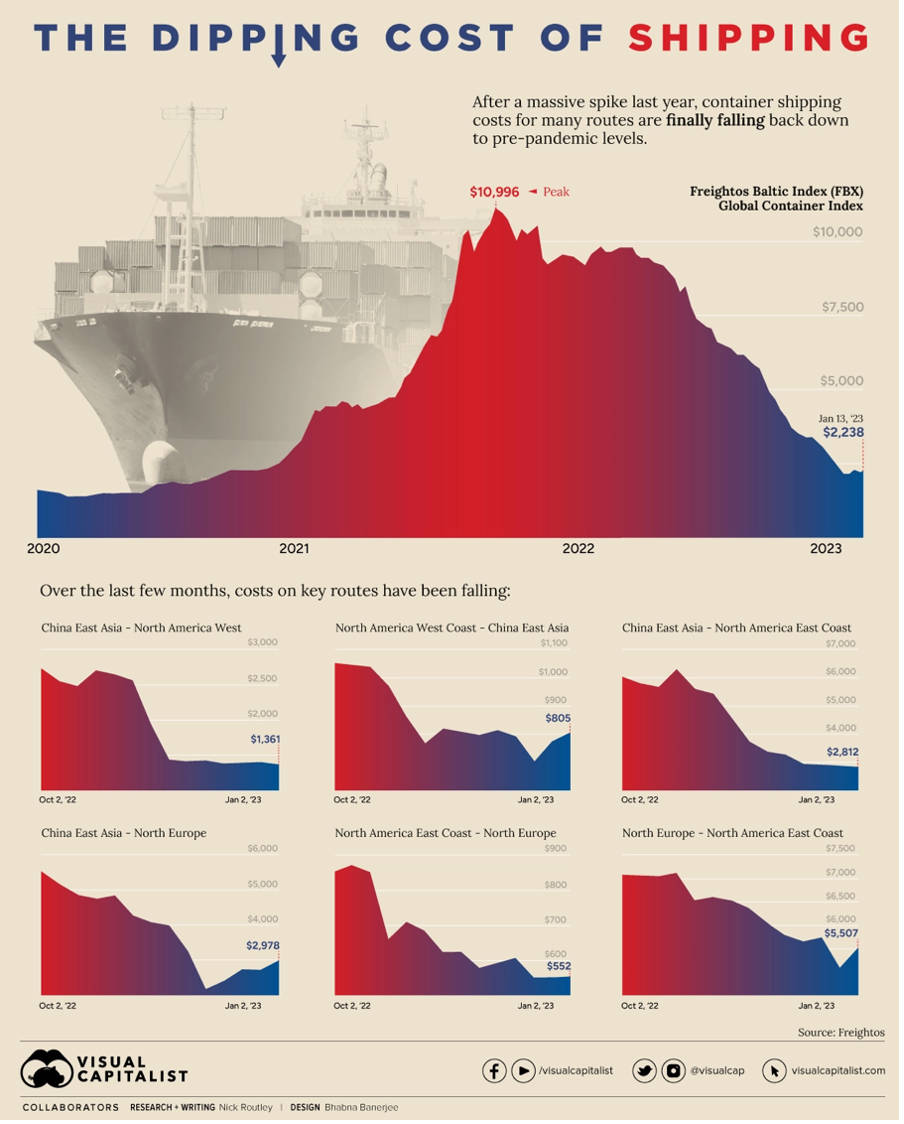
The above graph tracks shipping costs globally.
Shipping costs matter because the majority of trade is still conducted across the world’s oceans.
That’s why spiking shipping costs can significantly impact on global trade and the global economy. A study done by the IMF (International Monetary Fund) including 143 countries over the last 30 years showed that shipping costs are an important driver of inflation globally. It showed that when freight rates double, inflation can increase by 0.7% (that’s 0.7 of 1%).
The cost of shipping a 40-foot container from China to America (the west coast) is currently approximately US$1,400, down 93% from its peak of US$20,600 in September 2021. That is according to Freighters, an online freight marketplace.
So, declining shipping costs are probably not favoured by shipping companies but it’s pretty much good for most others across the global economy.
Anyway, this shipping data supports the US Fed narrative that the disinflationary process may be starting.
The United States of America
The Fed Funds ceiling rate
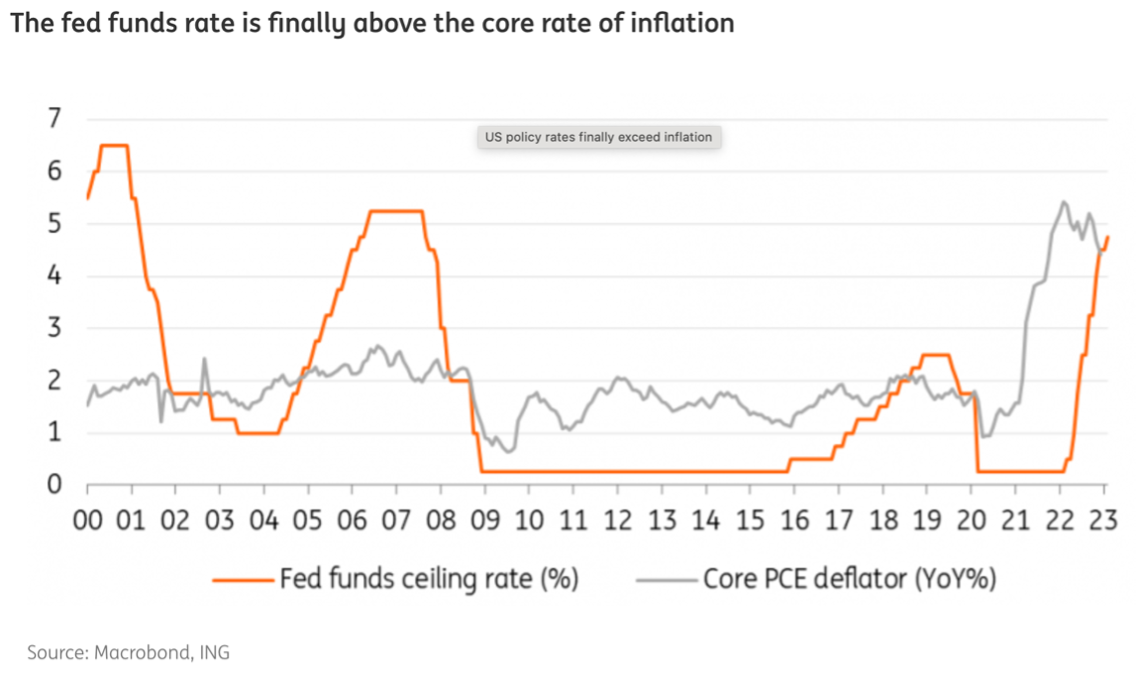
The above graph compares the Federal Reserve’s funds ceiling rate with the Core Personal Consumption Expenditures price index deflator.
As the above graph shows, the US Fed funds rate has now topped the core rate of inflation and so real progress against inflation appears to be underway. To be clear, real progress underway is different to inflation under control – it is not. We are however heading in that direction generally.
The above graph shows one of the key Federal Reserve objectives achieved, a step in the right direction. At the same time, we can see the US economy continuing to lose momentum which may help inflation to fall away, perhaps at a faster pace moving forward.
Interest rates – USA
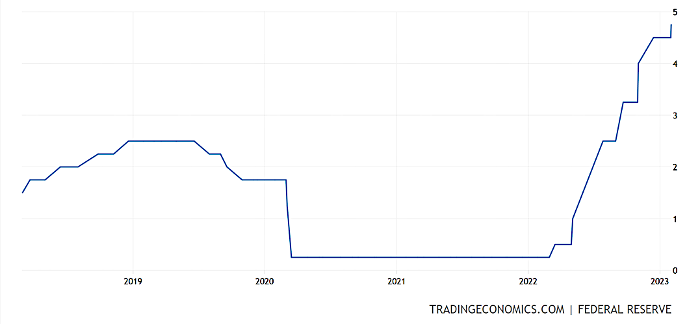
The above graph tracks the US Fed funds rate in America showing the latest interest rate hike to the right of the graph.
“One more and done.” This is the language popping up around the market suggesting another 25-basis point interest rate hike by the US Federal Reserve scheduled for March 22nd this year and then that should be the end of interest rate hikes – time will tell.
The language from the FOMC (Federal Open Market Committee) meeting just the other day from the US Federal Reserve Governor Jerome Powell is worth considering. Simply, the message appears to be that things are heading in the right direction but we’re not there yet.
Inflation is likely to remain elevated for some time as well interest rates. With economic growth declining we may also see unemployment rise although at this stage unemployment remains stubbornly low.
Jerome Powell in response to a question from a reporter suggested that it is certainly possible that the Fed can keep its benchmark interest rate below 5%. The latest hike brings the Fed Funds rate to a range of 4.5% to 4.75%.
Further, the disinflationary process, in his words, appears to be underway although as he says, it’s premature to declare victory on inflation front.
Unemployment – USA
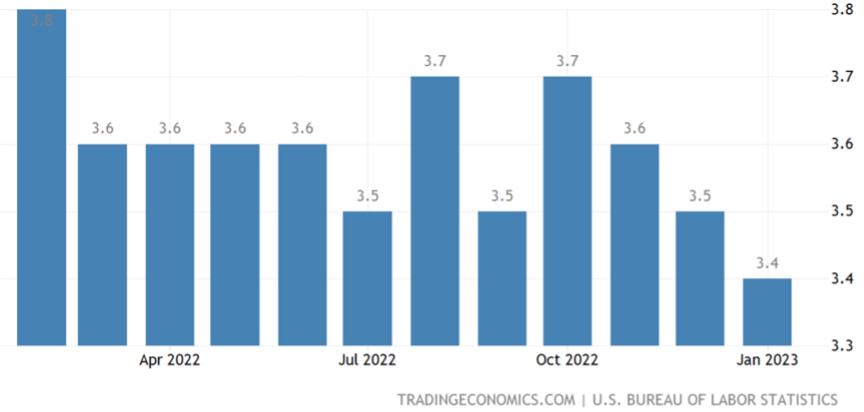
The above graph tracks the unemployment rate in America.
The data just released as I was preparing this report, shows the unemployment rate in the US inched lower to 3.4% in January 2023. This is the lowest level since May 1969 but more tellingly is below market expectations of 3.6%.
The market was projecting increased unemployment to 3.6%, instead, we got a decreasing unemployment to 3.4%.
This could mean that the US Federal Reserve may be forced to raise the Fed Funds rate to above 5% in the future.
Europe
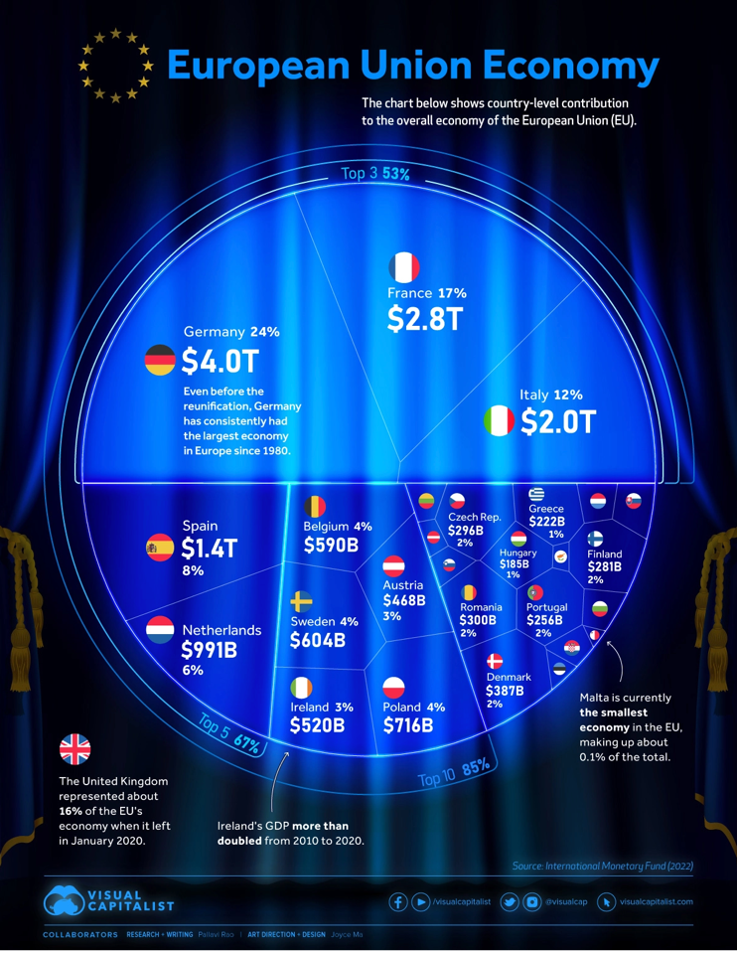
The above image shows the size of the economy of the European Union members.
At US$16 trillion, the European Union is the 3rd largest economy in the world, behind China and the US. It accounts for about 1/6 of global trade. Therefore, what happens in Europe matters to the rest of the world as well.
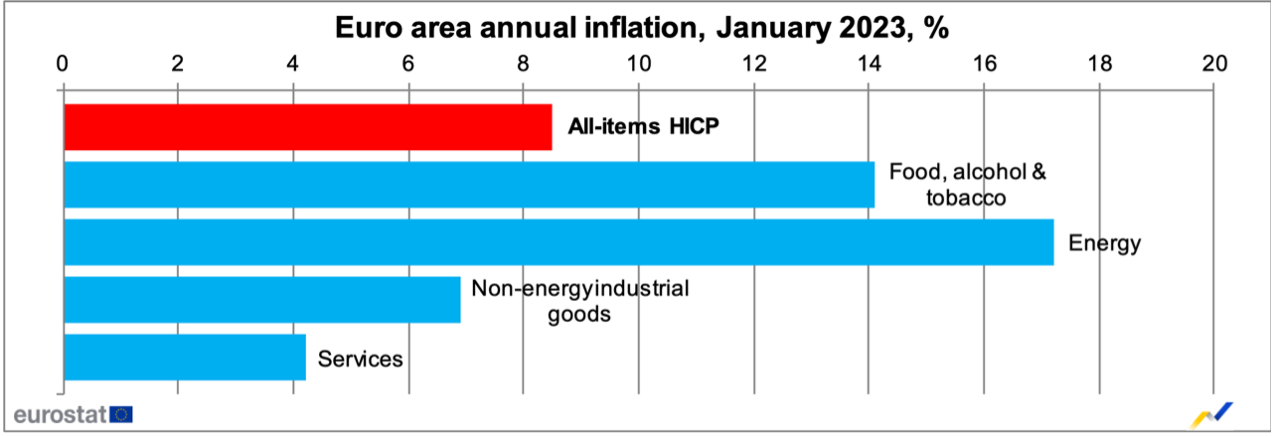
The above graph shows annual inflation across the Euro area.
The general consensus across Europe is that inflation is damaging and needs to be brought under control. The European Central Bank has increased interest rates by 250 basis points (2.5%) and stated that they will stay the course until such time as they have reached the point that they can see inflation returning to around 2%.
Interest rates – Euro area
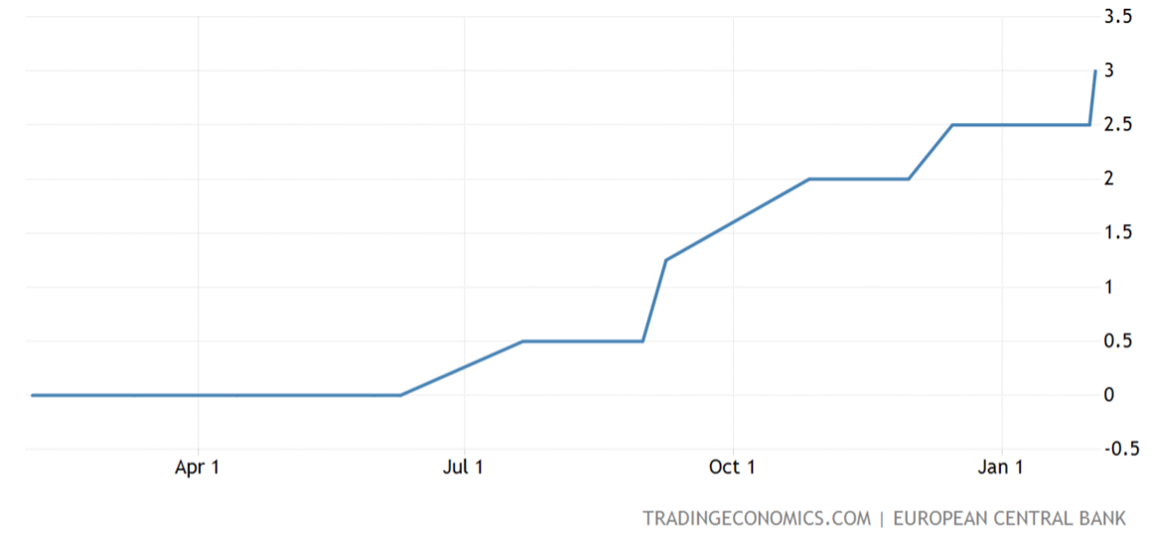
The above graph tracks interest rates across the Euro area.
So, like elsewhere around the world, the European Central Bank continues to push interest rates up. The hope is that they’ll be able to slow inflation down and eventually see it decline to around 2%. Quite a long way to go yet.
Like elsewhere in the world, unemployment remains low which on the one hand means that lots of people are working, generating taxable income and generating economic activity. On the other hand, this works against the European Central Bank’s idea of reducing inflation.
Australia

The above graph tracks historical and projected inflation along with the RBA cash rate.
Inflation in Australia is hovering around 7.8% which of course is too high and the reason why the Reserve Bank of Australia (the RBA) has raised rates so far by 300 basis points (3%).
Currently the Australian Reserve Bank appears to be proceeding with some caution, keeping an eye on the slowing housing market.
House prices across Australia declined for the 9th straight month in January as interest rates continue to rise.
House prices across Australia were down 7.2% from 12 months ago and 8.9% lower than their April peak.
Although there appear to be mixed views by economists around Australia, there are some that believe the RBA should continue its tightening cycle and not stop too soon – I agree.
Inflation in Australia has been forecast to average 5.2% this year and potentially decline to 2.9% in 2024, with the economy forecast to grow at around 1.7% over 2023 (according to a separate recent Reuters survey of economists).
New Zealand
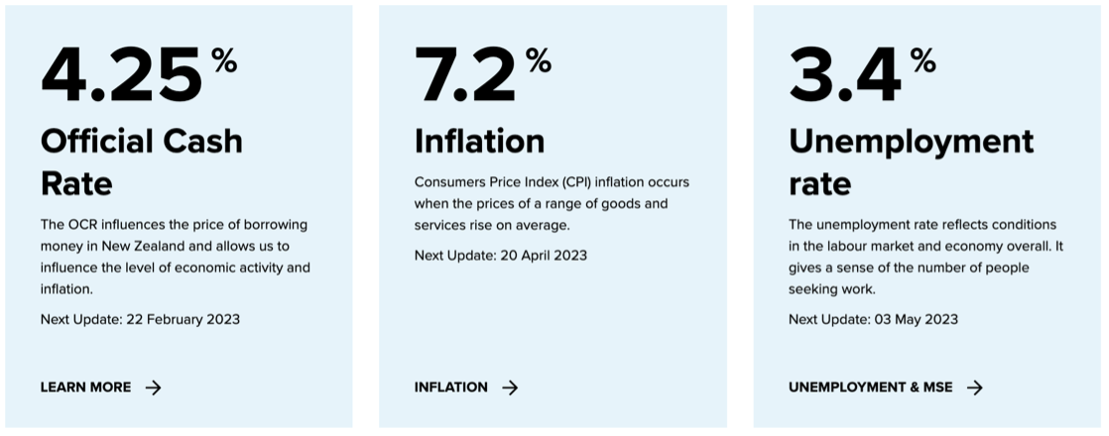
The above numbers are similar to last month’s report but with unemployment nudging up from 3.3% to 3.4%.
That’s good news for Adrian Orr the New Zealand Central Bank Governor. This suggests unemployment may help push back against inflation. I know it’s not much, but every little bit helps.
Inflation – New Zealand
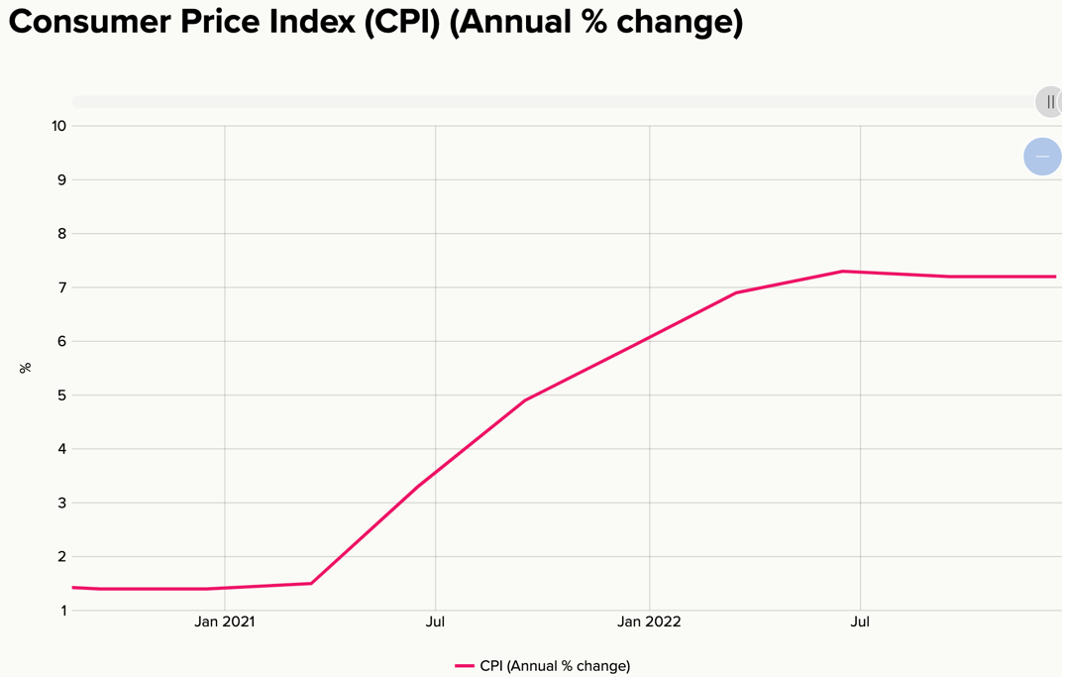
The graph above tracks the inflation rate in New Zealand from around January 2021 up to now.
Like other central bankers around the world, the New Zealand Reserve Bank is looking to reduce inflation down to around 2% (the midpoint between 1% and 3%). Compared to America, the New Zealand Reserve Bank might have a slightly tougher job to keep inflation under control the way things look at the moment. That therefore could mean more interest rate rises for Kiwis.
Mortgage interest rates – New Zealand
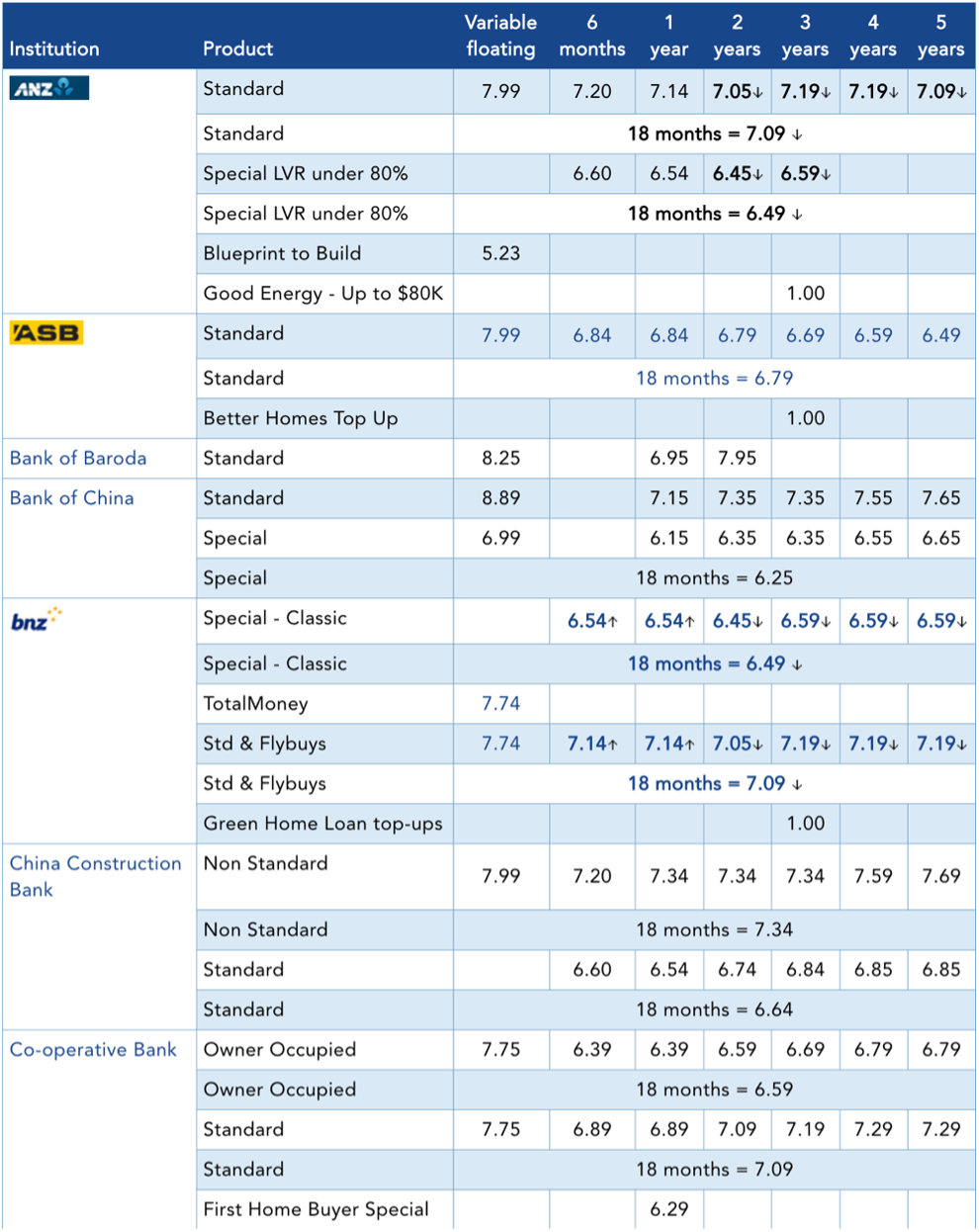
(Source: Interest.co.nz)
The cost of servicing loans for a number of New Zealanders has increased by around 45% over the last 12 months or so.
Term deposit interest rates – New Zealand
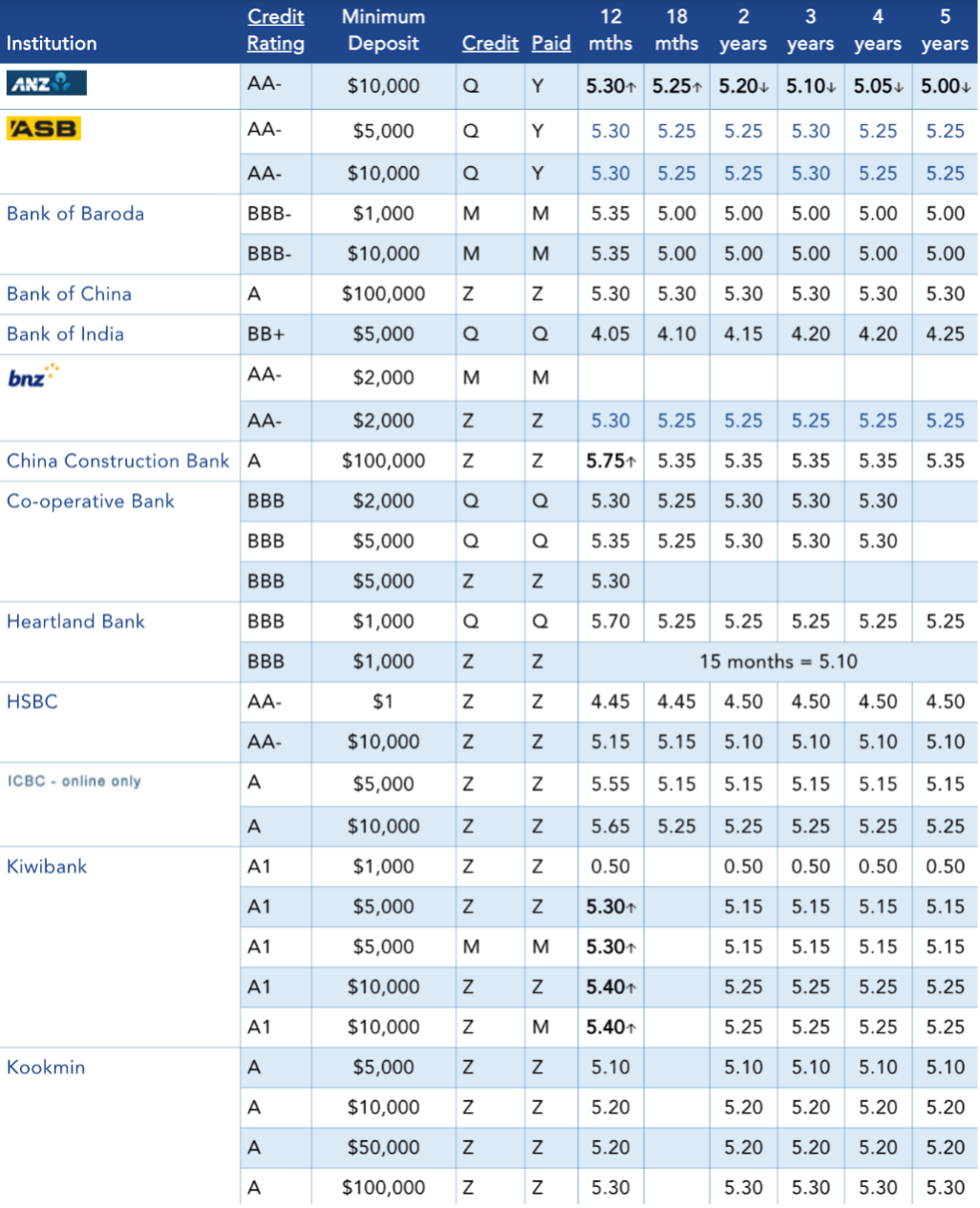
(Source: Interest.co.nz)
The above two tables show mortgage interest rates and term deposit rates across a sample of financial institutions in New Zealand.
It looks as though further interest rate rises are ahead. We’ll know more in March this year when the New Zealand Reserve Bank advises its next update with regards to interest rate direction. Another increase is likely.
Some retirees in New Zealand with large amounts of money to invest might be starting to think that term deposit rates are looking attractive. That is until of course, we do the calculation deducting tax from the interest and then the increase in the cost of living, in which case term deposits are delivering a negative return in real terms.
Informed investors know that, whilst term deposits can be useful as a short-term parking position, they are not practical for long-term investing.
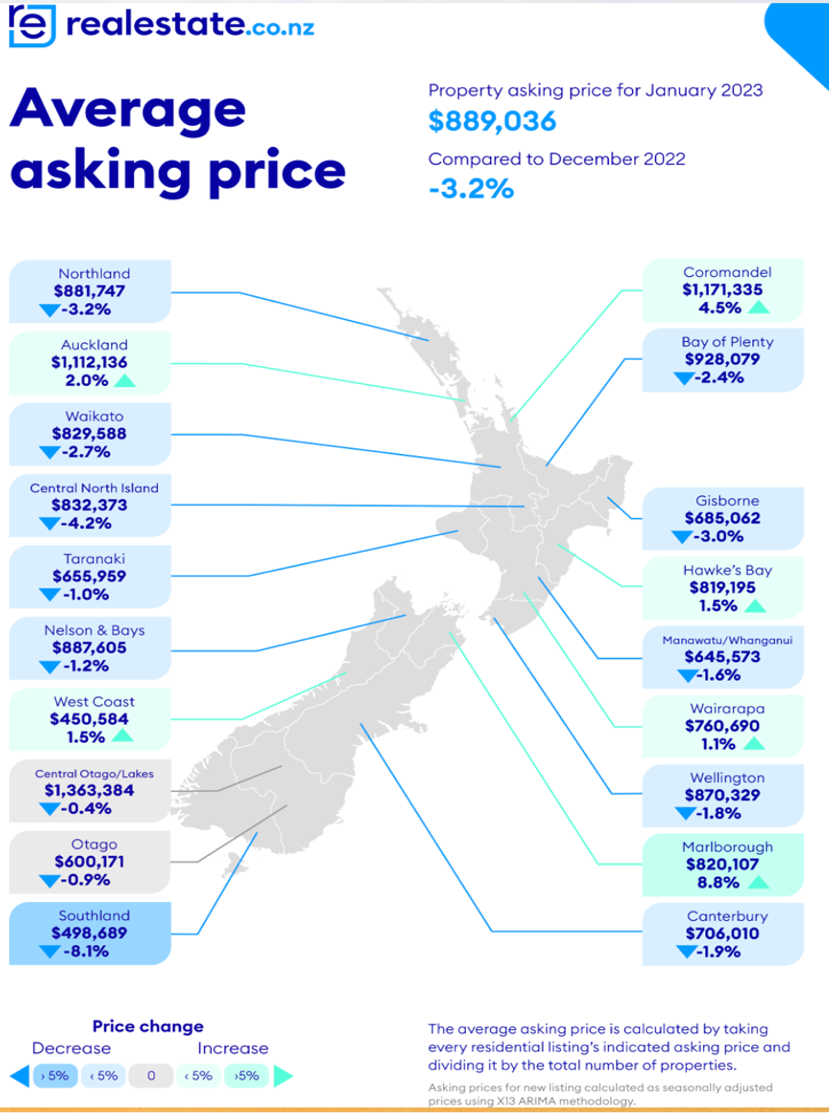
The average asking price in New Zealand is down 10.5% from the market’s peak 12 months ago.
Recent data suggests that the national average asking price fell below $900,000 last month according to realestate.co.nz.
Currently sitting at around $889,036 this number is down by around $100,000 compared to January last year.
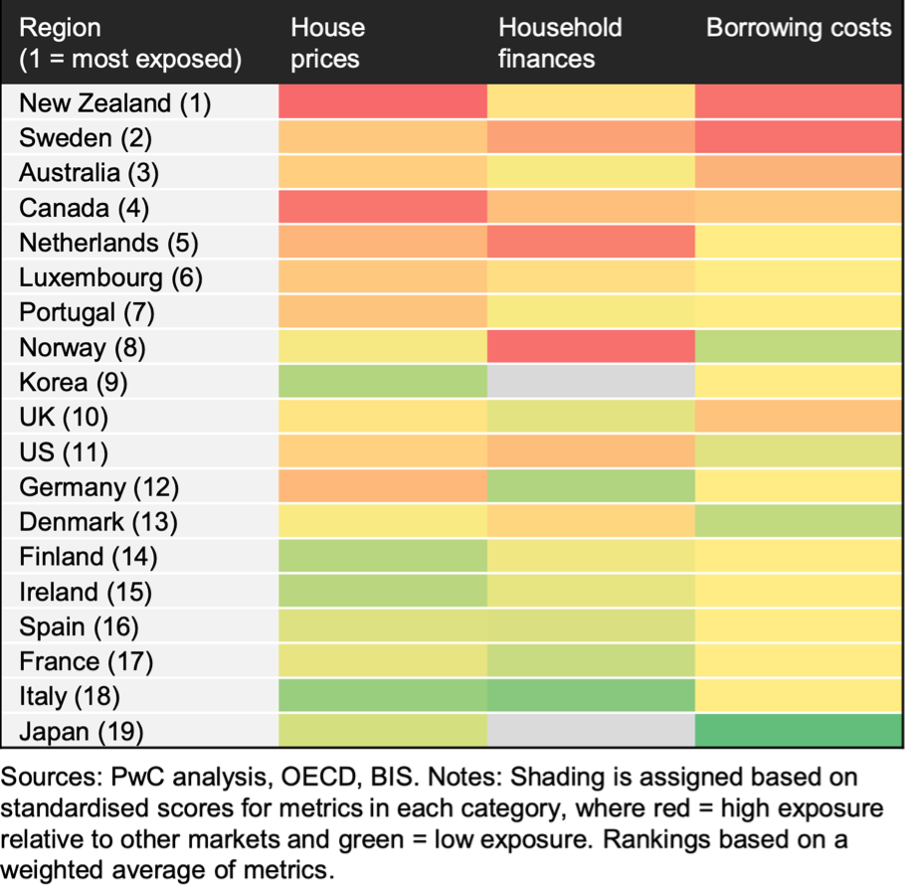
As the above table shows, New Zealand residential property remains expensive.
On another note, totally different, we have a new Prime Minister in New Zealand who appears to be popular and may mean the race to the finish line at the elections is shaping up to be a close one. What are you hoping for?
To Summarise …
The US Market has recently been somewhat buoyant, particularly compared to the last 12 months or so however, it’s a question of whether this upward spike can manifest itself into a more steady long-term upward trend. Unless significantly negative news emerges unexpectedly then we might be at the start of that upward trend.
That’s because there are signs that inflation is moderating in the US and that means that interest rate rises will follow. However, I think we all know that we are a long way from inflation being brought under control (around the 2% mark).
For New Zealand, the inflation battle is slightly more difficult at this stage however we may follow America and see our inflation slow down as well, as we progress over 2023. Further interest rate rises for New Zealand are ahead, almost without doubt. However, those rate rises could slow as we approach the 2nd half of 2023 here in New Zealand.
That said, it is useful to remember that rising interest rates have a latent effect, and the impact of those increased rates can take time to show up in the economy.
Unemployment however, not only in New Zealand but worldwide, remains low which supports inflation.
Other drivers though such as shipping costs for example have come back quite a long way. This all means that we could be at the start of that disinflationary process like Jerome Powell the US Federal Reserve Governor recently said.
China is opening up after the COVID lockdown which helps support economic activity and growth. As you’ve read in this report, economic growth continues around the world although at modest levels. Slowing economic growth can help bring inflation under control.
As for the markets, earnings announcements that are currently underway are important. A mixed bag I suspect will be tolerated by the market with those individual companies’ share prices ‘punished’ as it were if they miss unexpectedly.
Significant misses that are unexpected could create concern across the markets, particularly if they outweigh those earnings announcements that are closer to expectation. We are in the midst of it now and so it will be interesting to see how this unfolds over the next few weeks.
All that said, providing our businesses are quality, then we can be relaxed about the security of our investment portfolios.
The reality is that businesses don’t always make more money every year or increased sales every year.
Sometimes they make less than other years.
So long as they maintain their position within their market niche, continue to develop their ecosystem and retain brand strength, those quarterly announcements will still affect the trading price near-term but are less relevant in the medium-term.
Overall, inflation is tracking in the right direction at the moment as economic activity slows and interest rates continue to rise.
Steady as we go…
